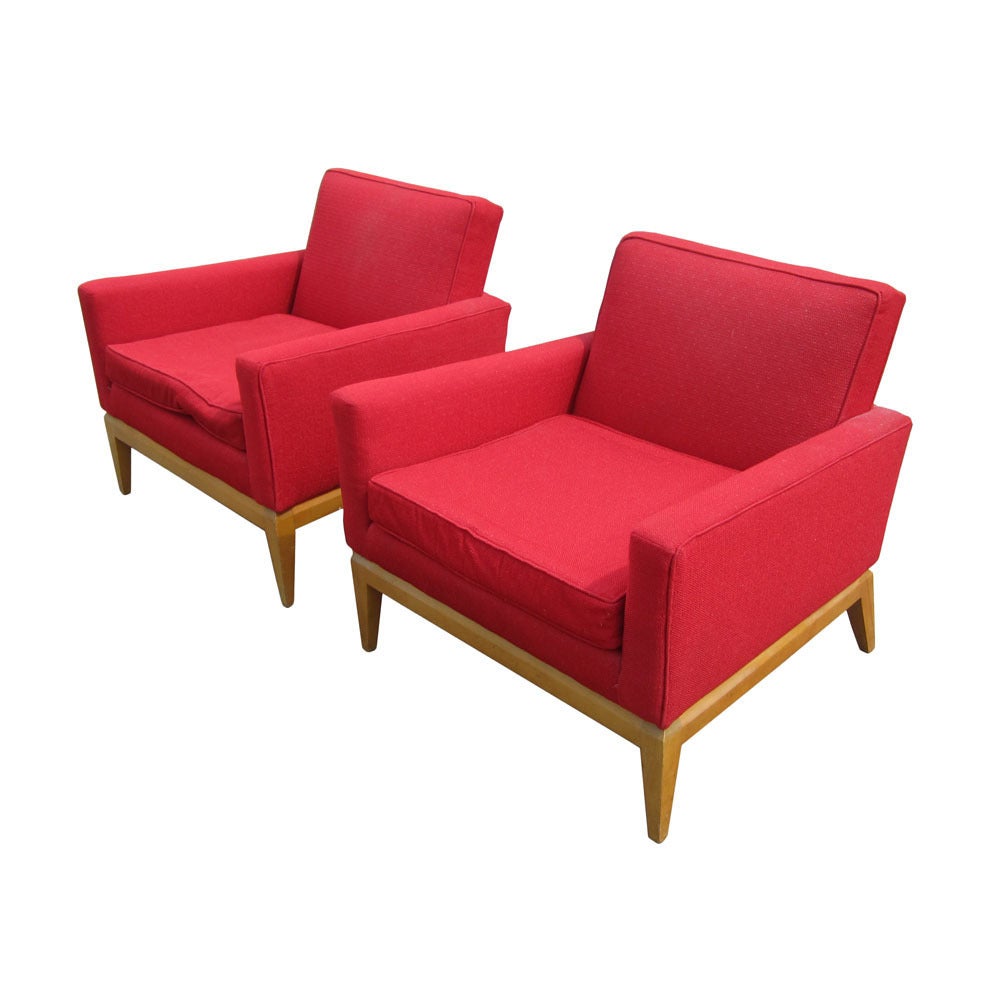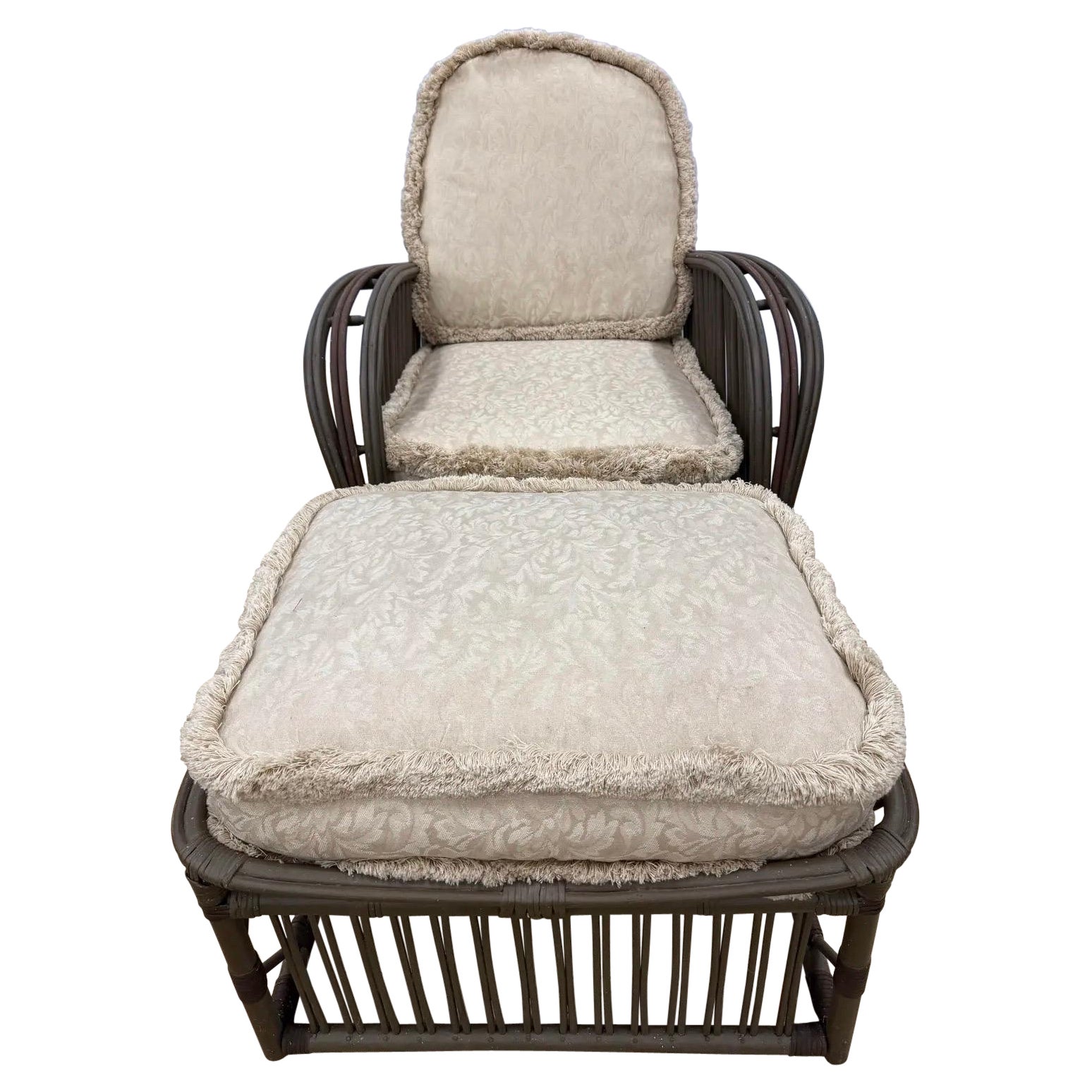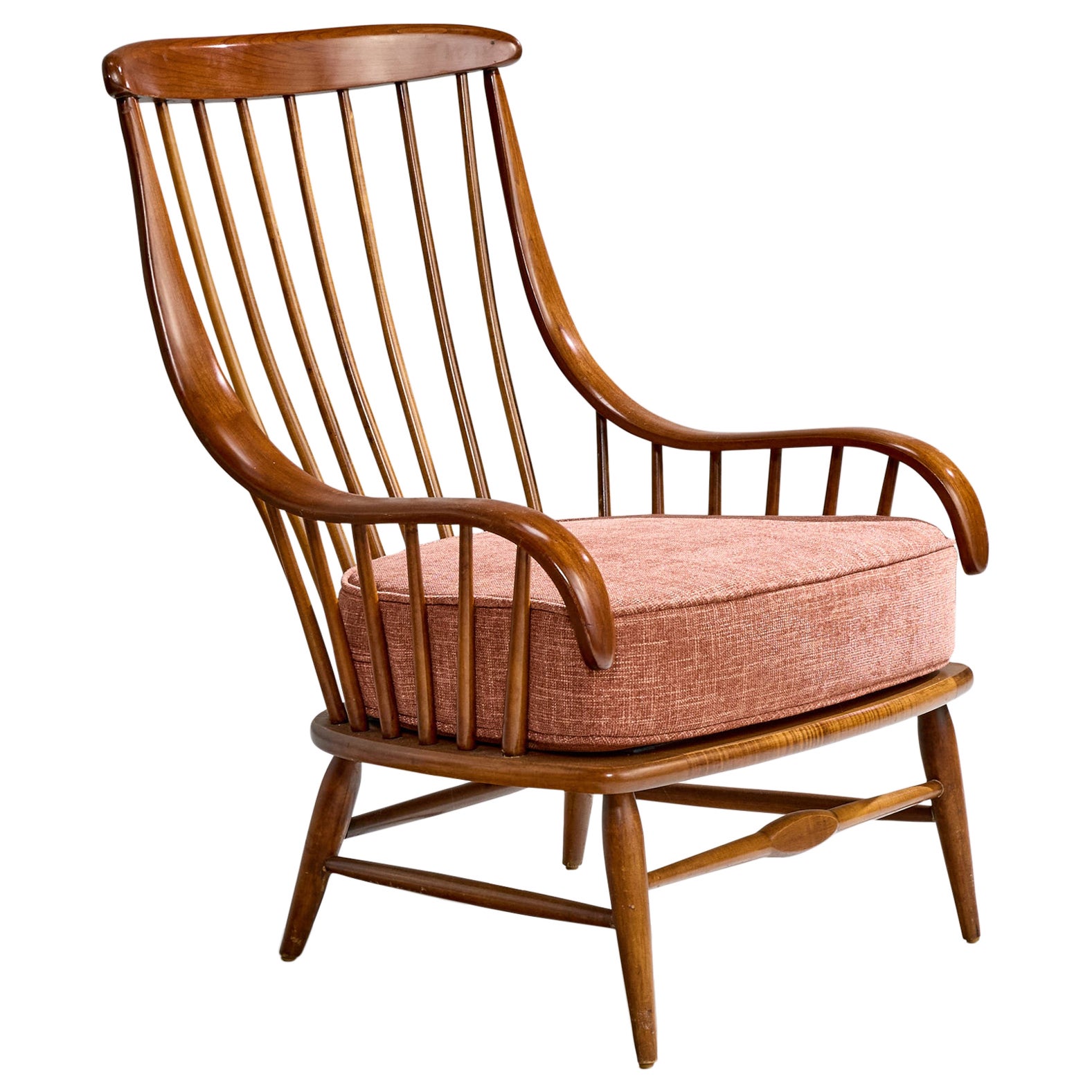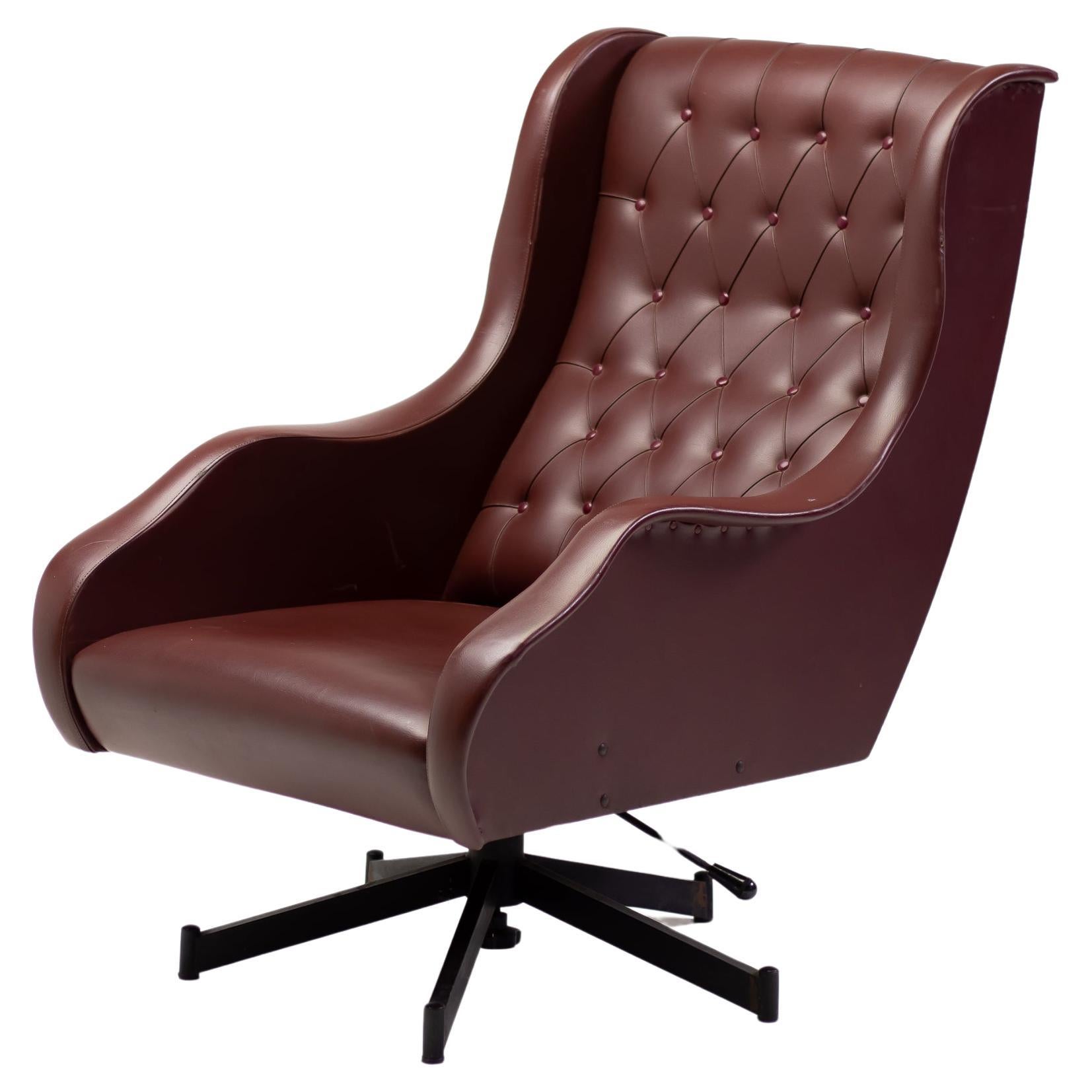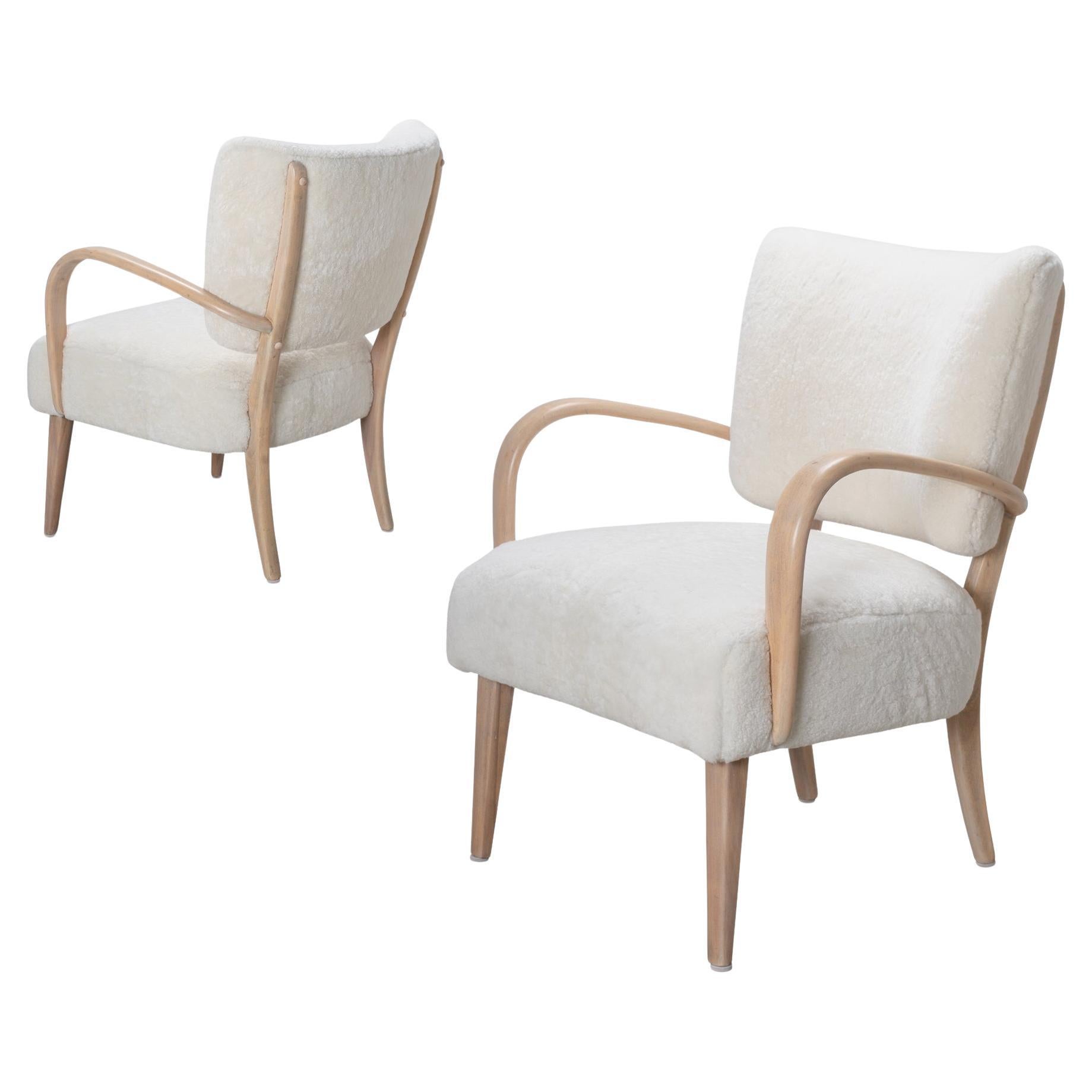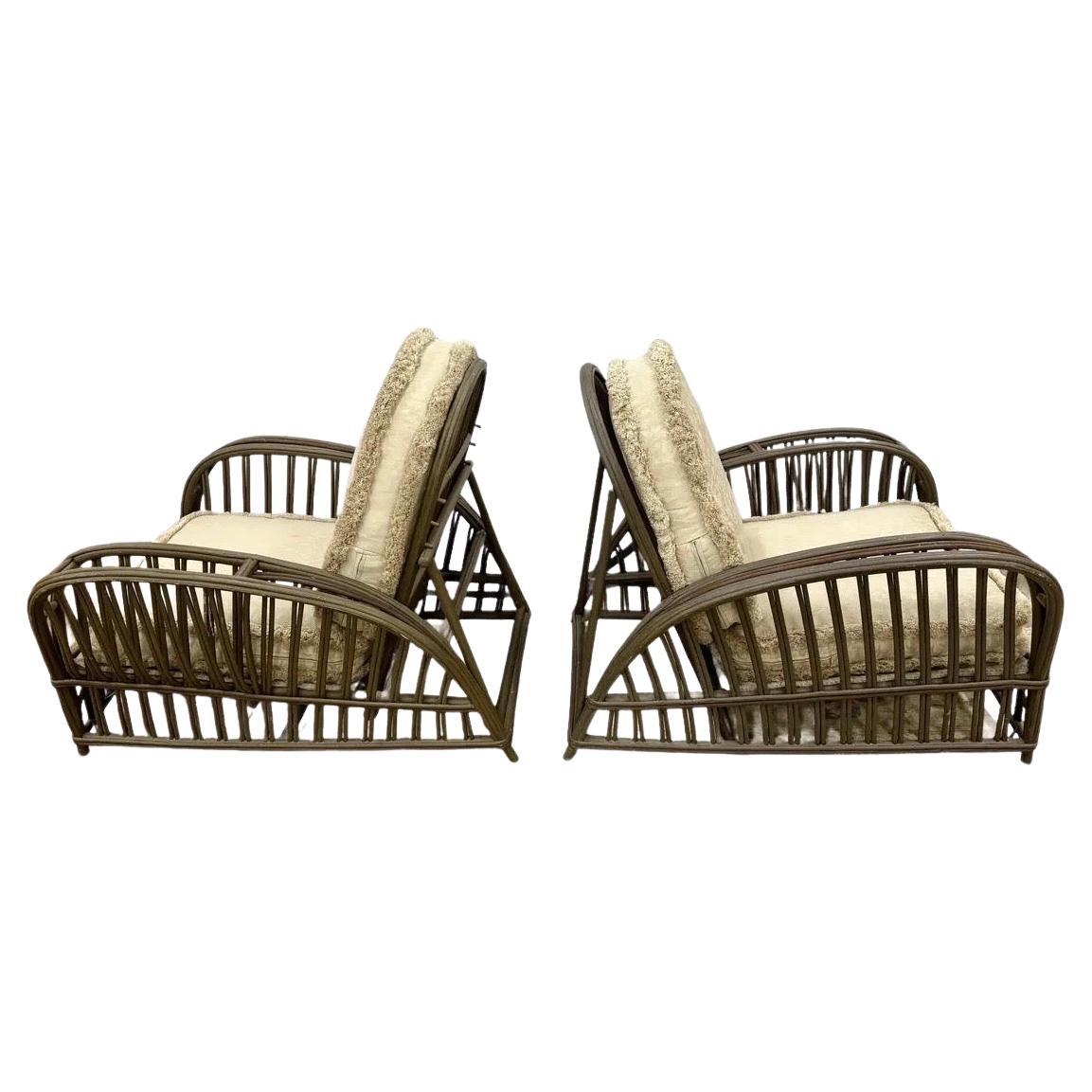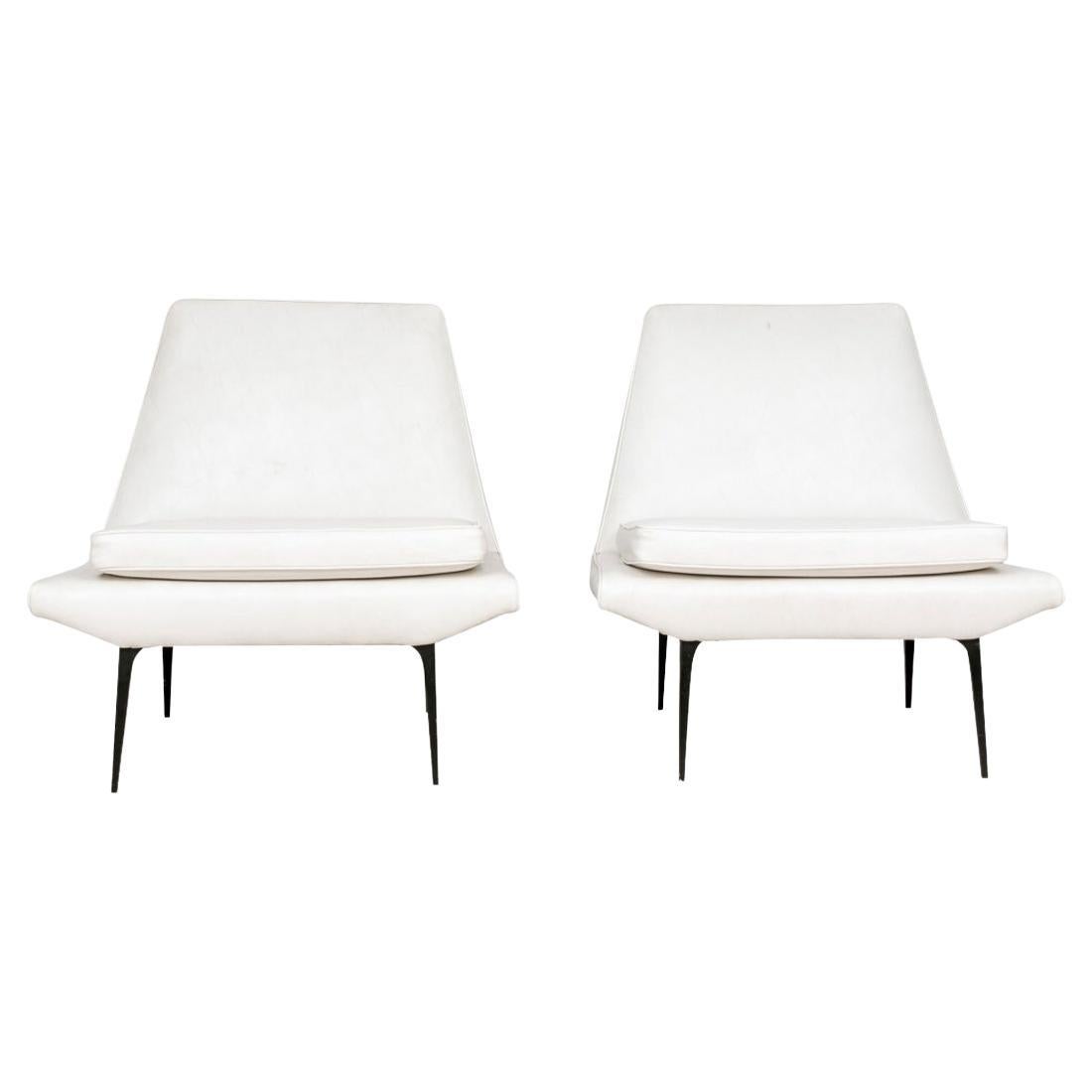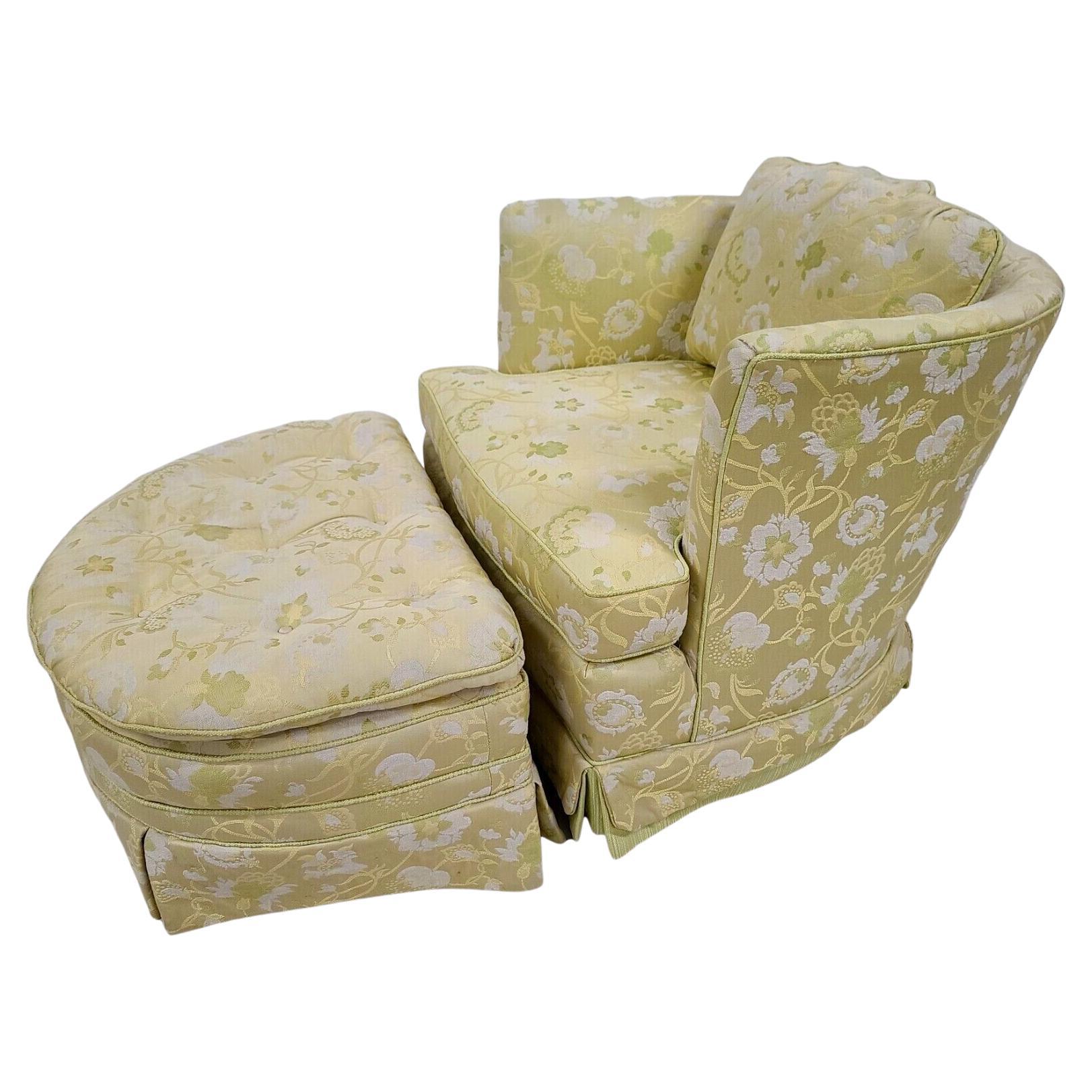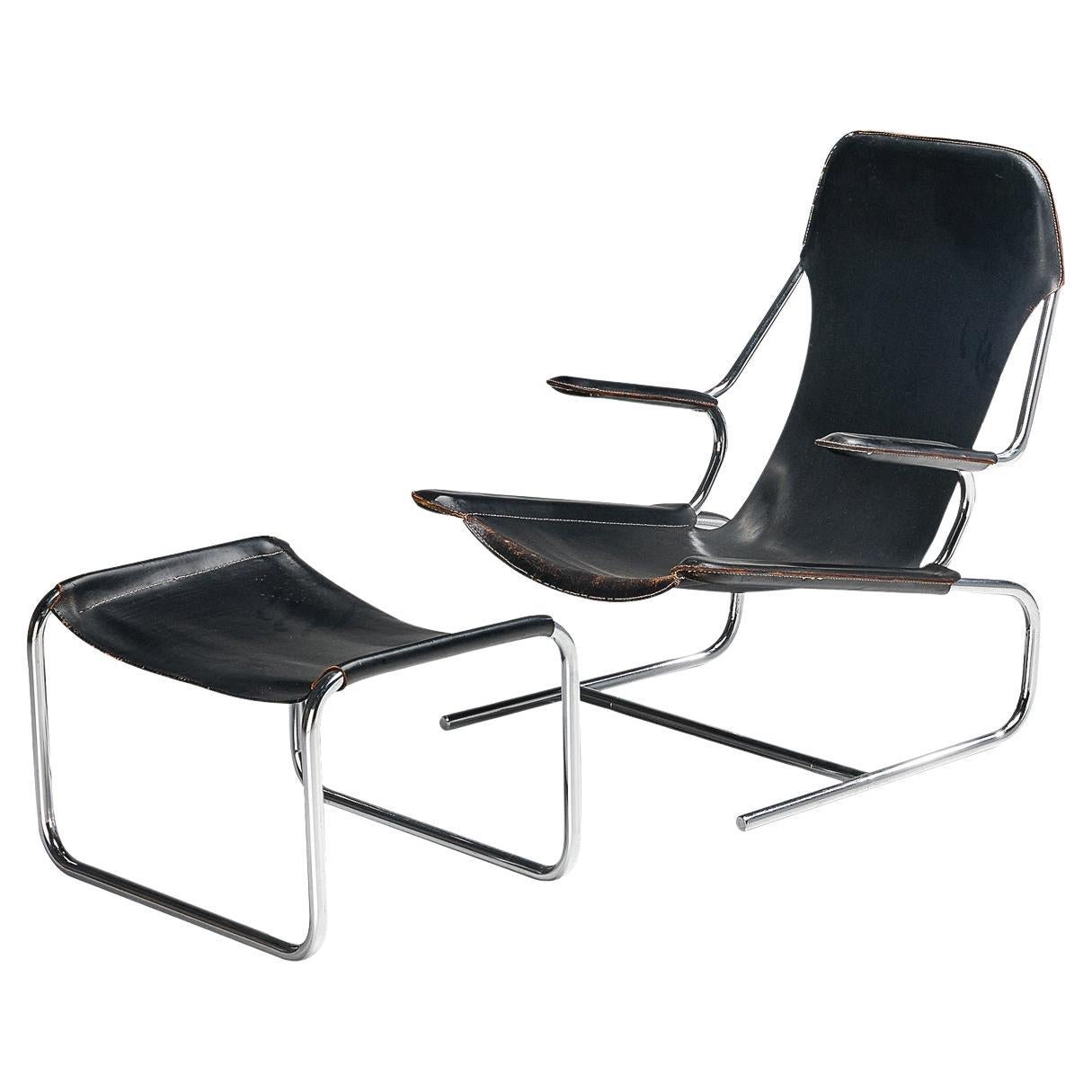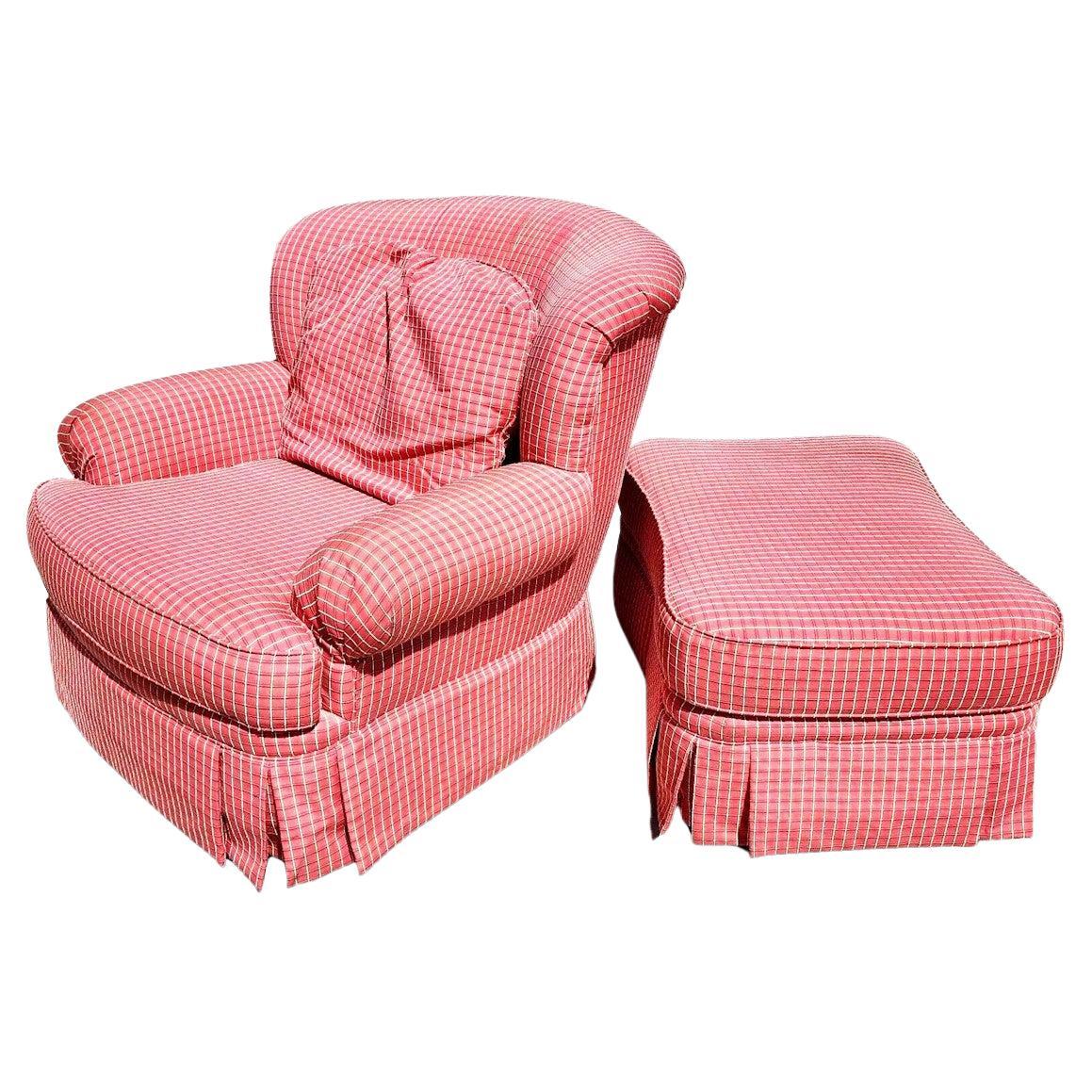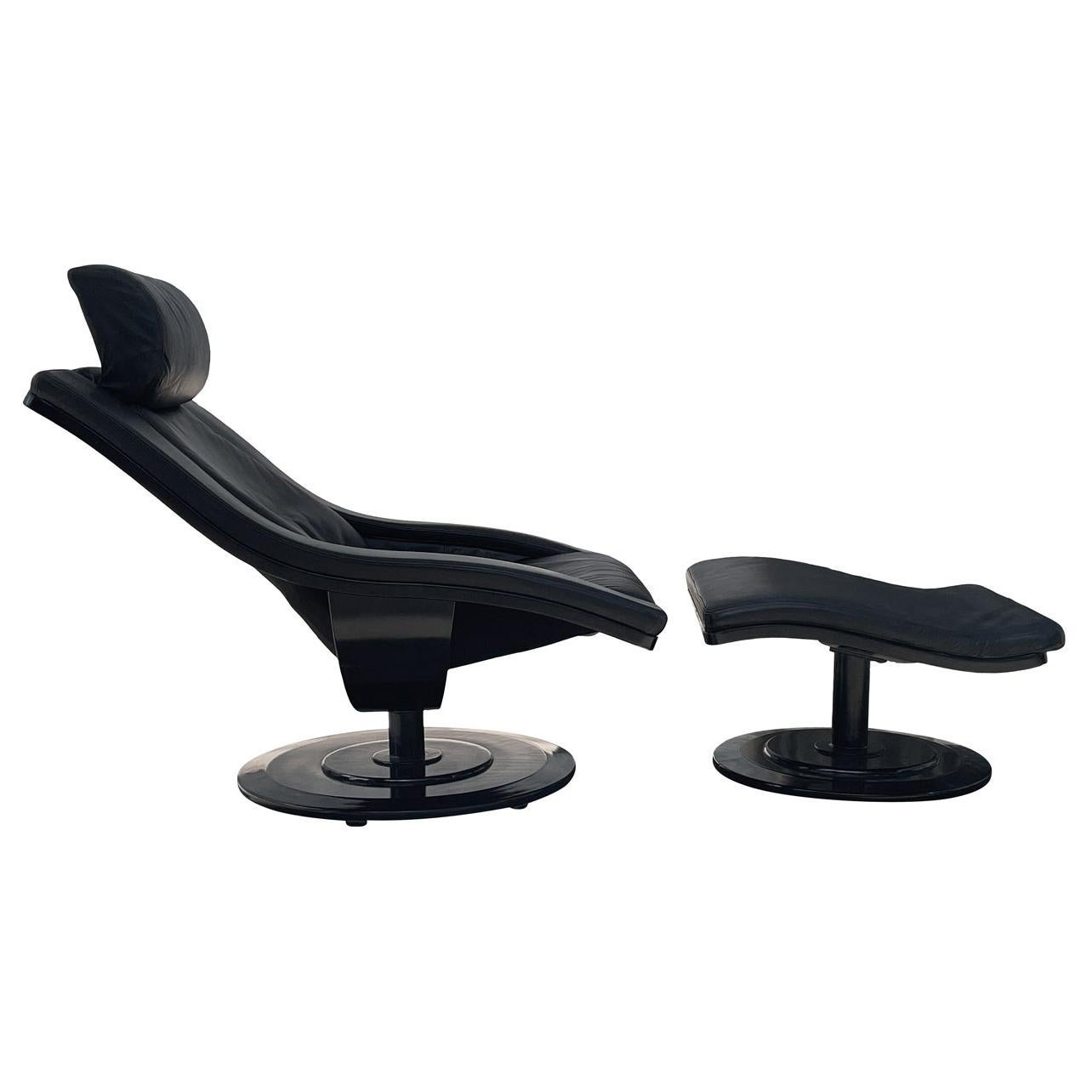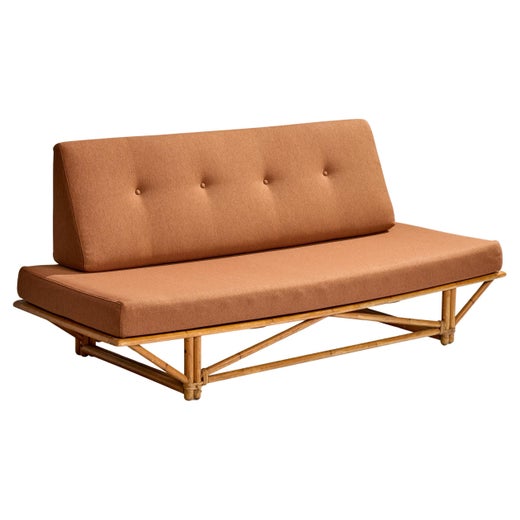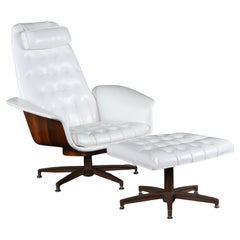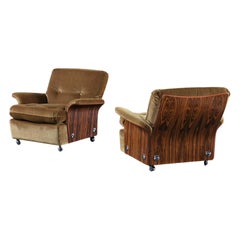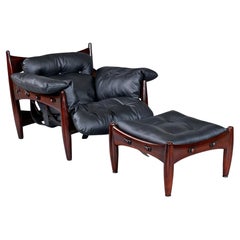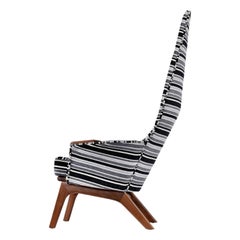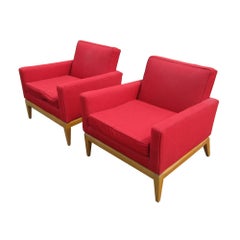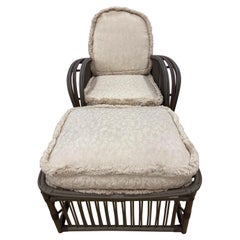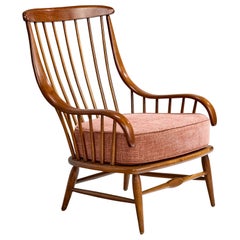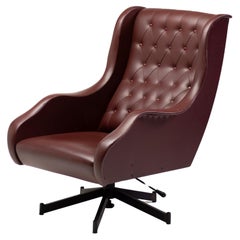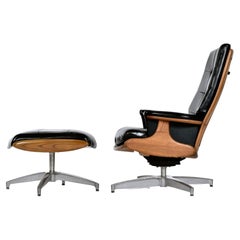
Black Naugahyde Heywood Wakefield 710d Swivel Rocker Lounge Chair and Ottoman
View Similar Items
Black Naugahyde Heywood Wakefield 710d Swivel Rocker Lounge Chair and Ottoman
About the Item
- Creator:Heywood-Wakefield Co. (Maker)
- Similar to:Charles and Ray Eames (Designer)
- Dimensions:Height: 38 in (96.52 cm)Width: 29 in (73.66 cm)Depth: 33 in (83.82 cm)Seat Height: 17 in (43.18 cm)
- Sold As:Set of 2
- Style:Mid-Century Modern (In the Style Of)
- Materials and Techniques:
- Place of Origin:
- Period:
- Date of Manufacture:1950s
- Condition:Reupholstered. Repaired: new webbing and clips. Refinished. Wear consistent with age and use. Original Naugahyde back cushion and arms. New, matching leather on ottoman and seat. Pulled seams on back cushion. New seat webbing and clips. Age-appropriate wear on chair frame back. Tiny cosmetic punctures on back cushion. Ottoman fully restored.
- Seller Location:Chattanooga, TN
- Reference Number:1stDibs: LU2255330805842
Heywood-Wakefield Co.
Created by the 19th-century merger of two venerable Massachusetts furniture makers, Heywood-Wakefield was one of the largest and most successful companies of its kind in the United States. In its early decades, the firm thrived by crafting affordable and hugely popular wicker pieces in traditional and historical styles. In the midst of the Great Depression, however, Heywood-Wakefield reinvented itself, creating instead the first modernist furniture — chairs, tables, dressers and more — to be widely embraced in American households.
The Heywoods were five brothers from Gardner, Massachusetts, who in 1826 started a business making wooden chairs and tables in their family shed. As their company grew, they moved into the manufacture of furniture with steam-bent wood frames and cane or wicker seats, backs and sides.
In 1897, the Heywoods joined forces with a local rival, the Wakefield Rattan Company, whose founder, Cyrus Wakefield, got his start on the Boston docks buying up lots of discarded rattan, which was used as cushioning material in the holds of cargo ships, and transforming it into furnishings. The conglomerate initially did well with both early American style and woven pieces, but taste began to change at the turn of the 20th century and wicker furniture fell out of fashion.
In 1930, Heywood-Wakefield brought in designer Gilbert Rohde, a champion of the Art Deco style. Before departing in 1932 to lead Herman Miller — the prolific Michigan manufacturer that helped transform the American home and office — Rohde created well-received sleek, bentwood chairs for Heywood-Wakefield and gave its colonial pieces a touch of Art Deco flair.
Committed to the new style, Heywood-Wakefield commissioned work from an assortment of like-minded designers, including Alfons Bach, W. Joseph Carr, Leo Jiranek and Count Alexis de Sakhnoffsky, a Russian nobleman who had made his name in Europe creating elegant automotive body designs.
In 1936, the company introduced its “Streamline Modern” group of furnishings, presenting a look that would define the company’s wares for another 30 years. The buoyantly bright, blond wood — maple initially, later birch — came in finishes such as amber “wheat” and pink-tinted “champagne.” The forms of the pieces, at once light and substantial, with softly contoured edges and little adornment beyond artful drawer pulls and knobs, were featured in lines with names such as “Sculptura,” “Crescendo” and “Coronet.” It was forward-looking, optimistic and built to last — a draw for middle-class buyers in the Baby Boom years.
By the 1960s, Heywood-Wakefield began to be seen as “your parents’ furniture.” The last of the Modern line came out in 1966; the company went bankrupt in 1981. The truly sturdy pieces have weathered the intervening years well, having found a new audience for their blithe and happy sophistication.
Find vintage Heywood-Wakefield desks, vanities, tables and other furniture for sale on 1stDibs.
More From This Seller
View AllMid-20th Century American Mid-Century Modern Lounge Chairs
Metal
Vintage 1970s English Mid-Century Modern Lounge Chairs
Velvet, Rosewood
Vintage 1960s Italian Mid-Century Modern Lounge Chairs
Leather, Rosewood
Mid-20th Century American Mid-Century Modern Lounge Chairs
Upholstery, Walnut
Vintage 1960s Brazilian Scandinavian Modern Lounge Chairs
Leather, Rosewood
Mid-20th Century German Mid-Century Modern Lounge Chairs
Metal, Chrome
You May Also Like
Vintage 1950s American Armchairs
Fabric, Maple
Vintage 1940s American Mid-Century Modern Lounge Chairs
Fabric, Textile, Rattan, Wood
Vintage 1950s American Mid-Century Modern Lounge Chairs
Fabric, Wood
Mid-20th Century Italian Mid-Century Modern Lounge Chairs
Steel
Vintage 1950s American Mid-Century Modern Lounge Chairs
Wood
Vintage 1950s American Mid-Century Modern Lounge Chairs
Fur, Birch
Recently Viewed
View AllRead More
The 21 Most Popular Mid-Century Modern Chairs
You know the designs, now get the stories about how they came to be.
A Guide to Herman Miller’s Most Iconic Furniture
The prolific manufacturer has partnered with many of the world’s top designers since opening its doors in 1923. Here are some of the company’s greatest hits, which helped transform the American home and office.
